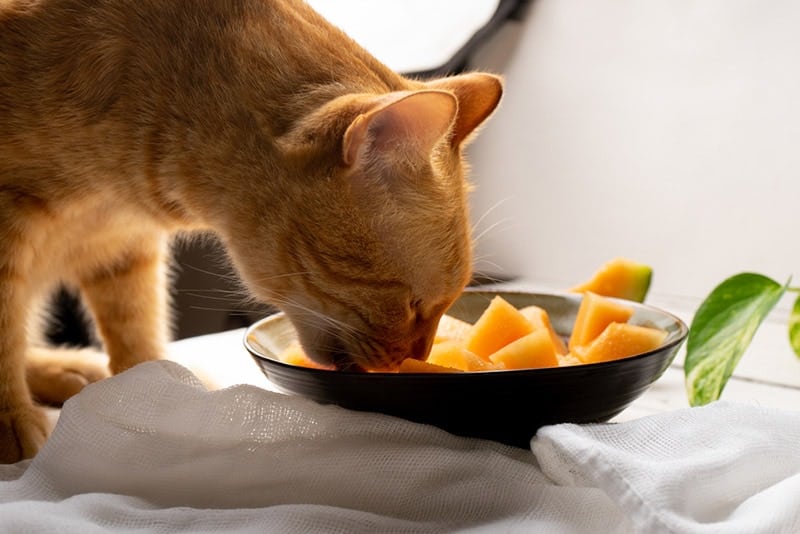Click to Skip Ahead
Cats are carnivores by nature, so as long as their diets are well-balanced like they would be in the wild, they don’t require any fruits or vegetables to stay happy and healthy. Still, there are fruits and veggies that your kitty can safely eat in moderation and that shouldn’t cause any health issues. These also have various nutritional benefits for cats to take advantage of.
Fruits That Cats Can Eat
Here are fruits that your feline family member can start chowing down on now.
1. Bananas
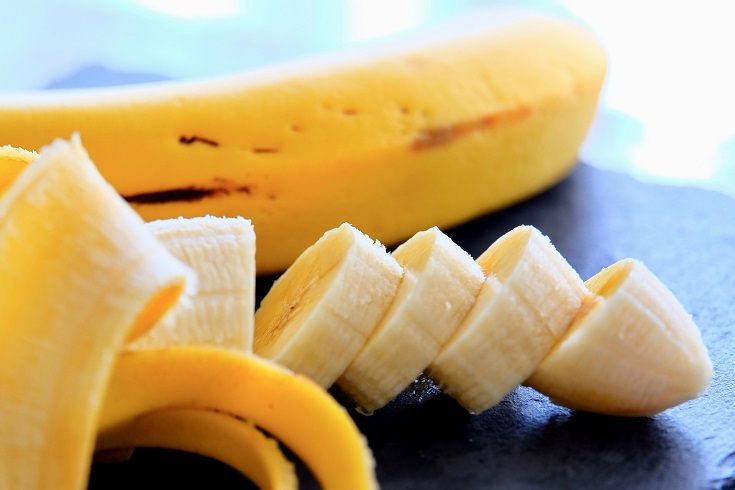
Felines require potassium for good health; otherwise, they can develop health problems like lethargy, weight loss, muscle pain, and even muscle weakness. While a cat’s diet should already provide all the potassium that they need for good health, bananas can offer a boost as necessary. However, your cat should never eat enough bananas to result in potassium overload. A small portion of a banana is all that it takes to satisfy a cat’s urge to snack while supporting their overall health.
While blueberries are not a “superfood” for cats like they are thought to be for humans, these small dark fruits are filled with antioxidants that can help keep felines healthy as time goes on. They promote good joint health and can help neutralize any free radicals roaming around in a cat’s body. Some cats like raspberries and others don’t. The good news is that it doesn’t really matter either way. Raspberries aren’t necessary for good cat health, but they do provide a source of fiber and antioxidants that felines can benefit from, even if minimally. These fruits also happen to have vitamins K and A, which play a positive role in things like blood clotting, skin development, and muscle health. Strawberries are not toxic to cats, and they contain a decent amount of fiber and minerals that they can benefit from. This fruit is high in water content, so offering a strawberry on a hot sunny day can help relieve your cat and reduce the risk of dehydration. However, strawberries should never replace access to fresh, clean water. Watermelon is a delicious summertime treat, and some kitty cats seem to think so too. Fortunately, there is nothing problematic about offering a small portion of this juicy fruit to your feline family member if they show any interest in it. The fruit is hydrating, contains potassium, and has plenty of vitamin C in it. Cantaloupe doesn’t pose a risk to cats unless they try eating the rind, in which case, it could be a choking hazard. There are many vitamins and minerals present in cantaloupe that cats could benefit from, but it’s unclear how many of these nutrients they actually absorb when eating the fruit, given their carnivorous tendencies. Pumpkin is a nutrient-rich snack that many cats enjoy snacking on. It’s filled with essential fatty acids, antioxidants, and fiber, which can all help keep your kitty’s digestive tract in good working order. Cucumbers are watery and refreshing for most people, and your kitty might think so too. They are the ultimate summertime snacks for cats due to their water content. Cucumbers also contain nutrients like magnesium and phosphorus that cats can benefit from. Zucchini is full of water and therefore can help keep your kitty hydrated, especially on active and hot/humid days. While this food is not usually included in a cat’s daily commercial food, it can help boost their fiber and nutrient intake over time. We might love bell peppers, but at best, cats tolerate them. However, they are full of water and antioxidants that felines can benefit from, especially when they are old, dehydrated, or ill in some way. Your kitty needs just a few bites to satisfy their munchies while benefiting their body.
Learning about what your cat can and cannot eat is a crucial part of keeping them happy and healthy! Choosing a bowl to serve cat-friendly foods in is another important decision pet owners face. Satisfy the specific needs of your cat with the innovative design of the Hepper NomNom Cat Bowl. Learn why it’s our (and our cats!) favorite food and water dish here. At Catster, we’ve admired Hepper for many years and decided to take a controlling ownership interest so that we could benefit from the outstanding designs of this cool cat company! Try one of these cat-safe veggies when you want to treat your kitty. Spinach is vitamin-rich, but it may contribute to the development and recurrence of bladder stones due to the abundance of calcium in it. So, only offer this veggie as an occasional treat to your kitty, especially if they have never been diagnosed with calcium oxalate bladder stones. Green beans are interesting and viable snack options for feline family pets and strays alike. Some cats like raw beans, while others enjoy them cooked. Then, there are those that do not like them at all. Try feeding both cooked and raw green beans to your kitty during snack time before abandoning the idea. Broccoli is a safe green food for cats to enjoy, just like humans do. No toxic compounds are present, so there is no need to worry about them eating too much of it, though they likely wouldn’t do so on their own account, anyway. Chewing broccoli can help a cat rid themselves of the urge to chew on other things, such as curtains and furniture. Peas are green foods that cats can safely eat and that may provide health benefits in the long run. They’re full of fiber and vitamins A, C, and K for proper muscle, nerve, and eye growth and management. They also contain minerals like iron and potassium. Cats can safely eat cauliflower as part of their diet. However, when eaten raw, the development of uncontrollable gas can occur. Cooked without butter, oil, or spices is the best option because it keeps gas to a minimum and is easier for a cat to eat overall. Microwave, steam, sauté, or bake this food to have it be more appealing to your kitty. Cooking cauliflower will make the process of eating and digesting the food easier for your furry family member. Cats should not rely on fruits and vegetables to satisfy their nutritional needs because they are obligate carnivores. However, many fruits and veggies, like the ones outlined here, won’t hurt your cat and can add to their nutrition in the long run. Related Reads: Featured Image Credit: Guajillo studio, Shutterstock
2. Blueberries
3. Raspberries
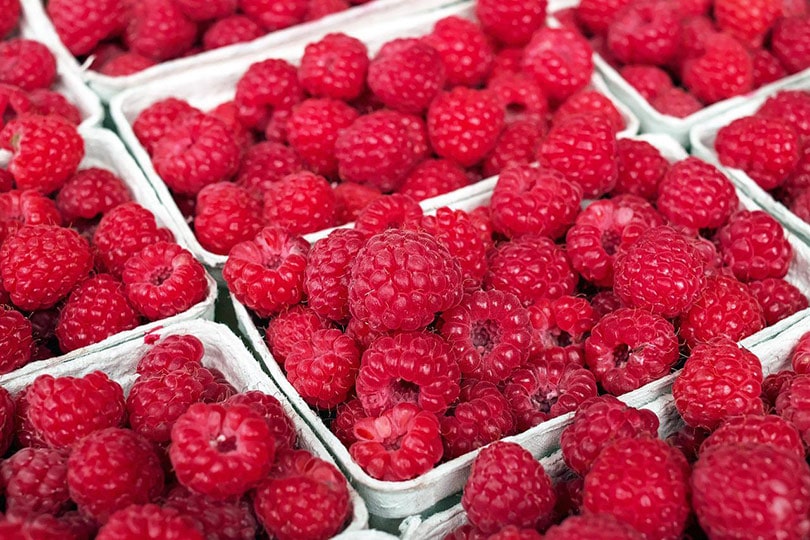
4. Strawberries
5. Watermelon
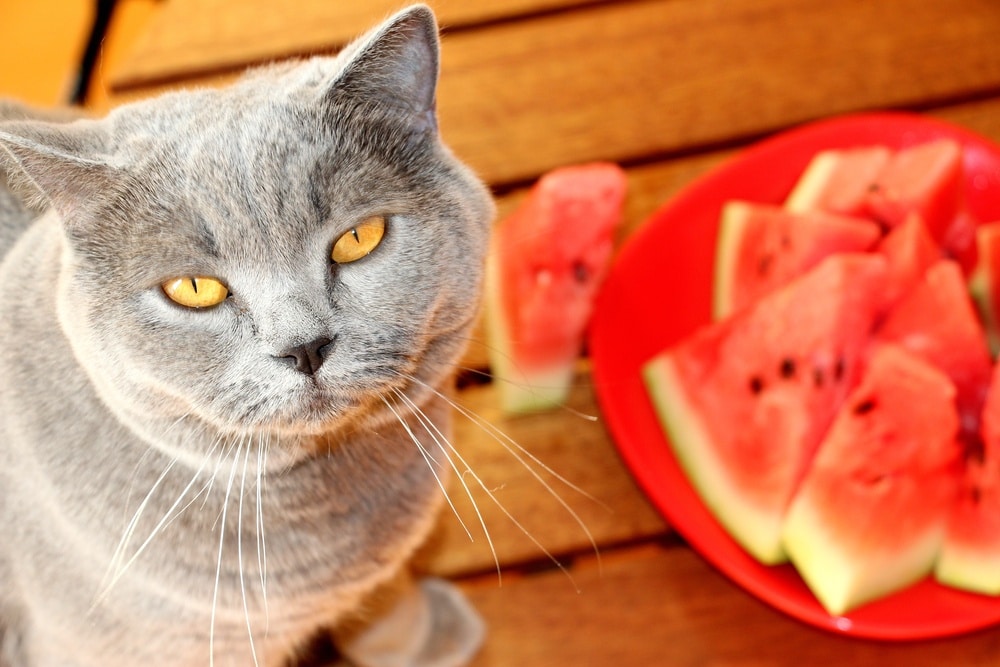
6. Cantaloupe
7. Pumpkin
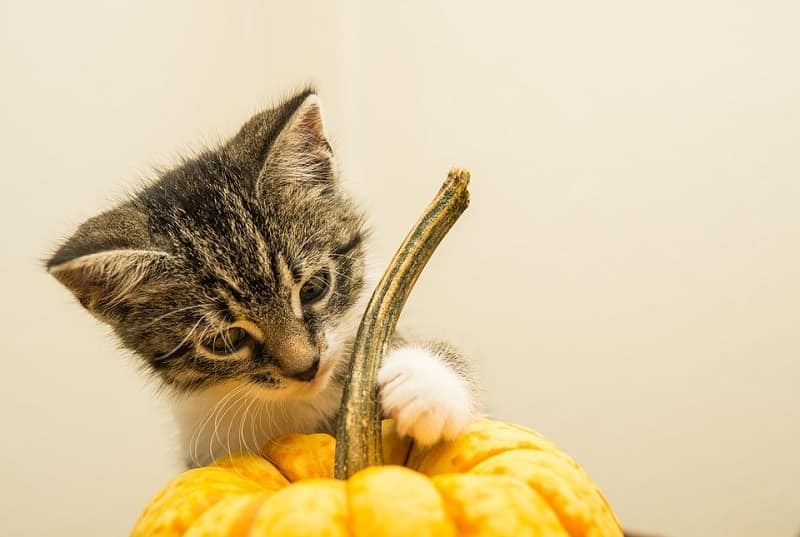
8. Cucumbers
9. Zucchini
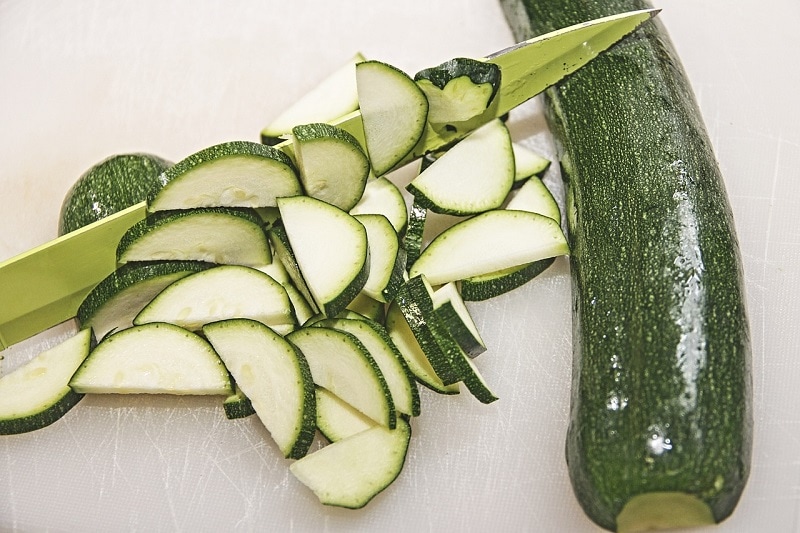
10. Bell Peppers
Vegetables That Cats Can Eat
11. Spinach
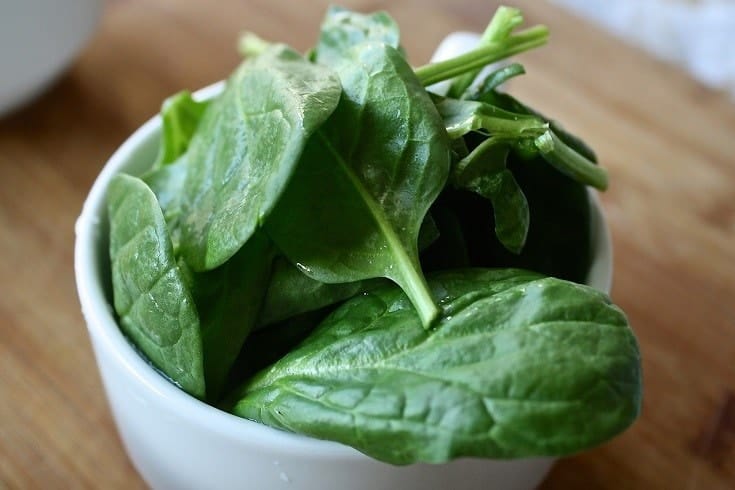
12. Green Beans
13. Broccoli
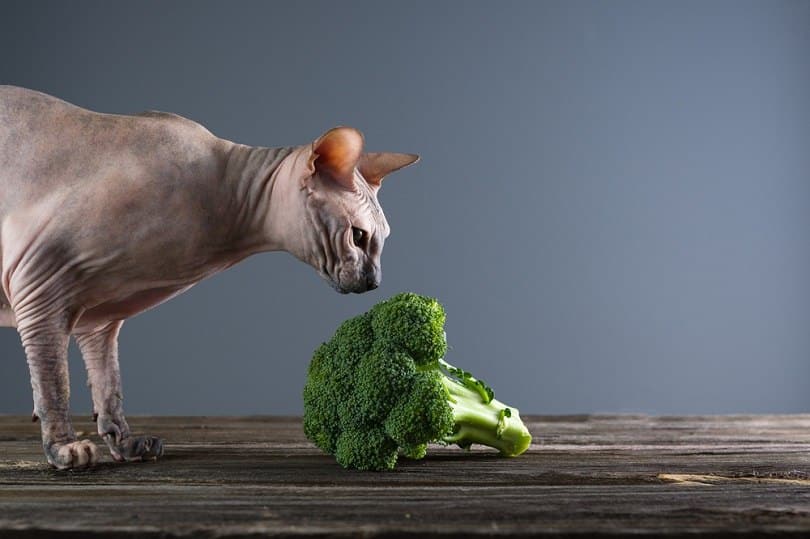
14. Peas
15. Cauliflower
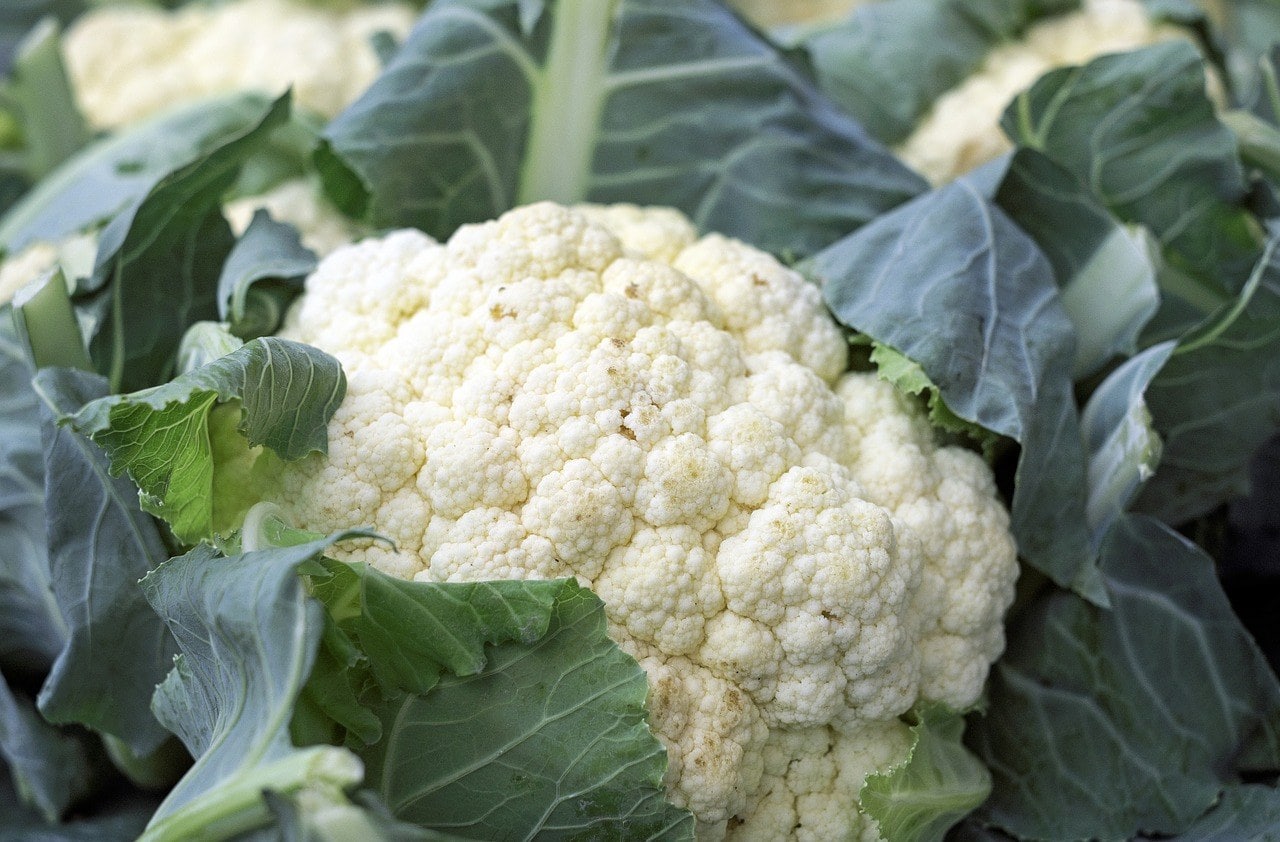
Conclusion

